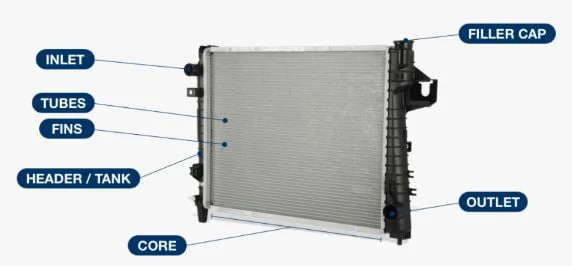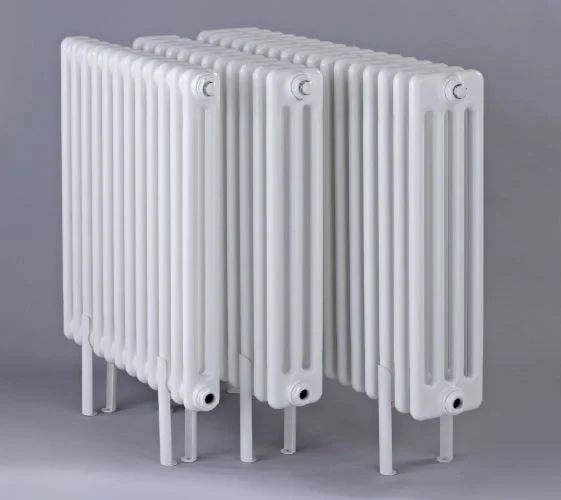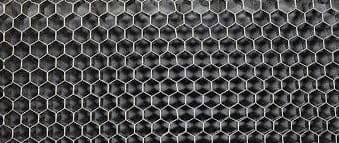Radiators are used to convert thermal energy from one mode to another for the purpose of cooling and heating. Radiators function in automobiles, buildings as well as in electronics. It acts as a source of heat to the surrounding but might be the purpose of heating the environment, it acts as a coolant source for automotive engine cooling.
Radiators transfer most of their heat via convection rather than thermal radiation. If there are large temperature differences, it can cause distortion of the engine components.
The radiator will do the cooling purposes because the temperature of the burning gases in the engine cylinder reaches up to 1500 to 2000°C.
If the heat is not dissipated there can be a failure of the cylinder material. Radiators can reduce the chances of piston seizure and keep the temperature minimum.
Radiator Main Parts or Construction:
Radiator Main Parts or Construction are follows:
- Upper Tank
- Lower Tank
- Tubes
- Filler Caps
- Fins
- Outlet

We will study one by one in detail,
Upper Tank:
Due to absorbing heat from the engine coolant get hot, the liquid expands and creates pressure in the radiator additionally. The pressure causes the coolant to get higher than the pressure cap, in order to prevent leakage excess coolant needs to be captured somewhere. The excess fluid flows into the pipe and goes into the overflow tank.
When the driver parks turn off the engines the vehicle and the heat dissipates which causes the coolant. The coolant will then contract instead of expanding; resulting in the volume of the coolant.
The vacuum effect will take place where the pressure decrease allows the excess coolant in the overflow tank to flow back so it can return to the radiator. Tanks could also be made of brass, plastic, a polyamide).
Lower Tank:
Just after it has passed through the heat radiating tubes and fins in the body of the radiator the bottom tank receives the cooling water.
The significant temperature takes place. From the block, the thermostat releases water at 180 degrees Faranhite. That water can lose as 100 def. F. depending on the ambient air temperature and the efficiency of the radiator by the time it reaches the bottom tank.
The water pump holds this cooled water. It will back into the block where it is again heated up.
Tubes:
On its way to the opposite tank, as the coolant passes through the radiator tubes, it transfers heat to the tubes that transfer the heat to the fins that are attached between the rows. The fins head the heat flow to the ambient air.
Radiator tubes are made up of brass. The use of aluminum increased, eventually taking over the vast majority of vehicular radiator applications.
Filler cap:
Since the coolant expands the high coolant temperature leads to an increase in pressure in the cooling system. Coolant is press in the tank that will increase the pressure in the tank.
A pressure relief valve in the filler cap opens. It allows air to escape. Partial vacuum forms in the cooling system when the coolant temperature returns to normal. This causes a vacuum in the tank because the Coolant is extracted from the tank.
Fins:
Fins are surfaces that are used to increase the rate of heat transfer to or from the environment and they extend from the surface by increasing convection.
Fins increase the surface area and can be an economical solution to heat transfer problems.
Types of radiators:
There are mainly two types of Radiator:
- Tabular Type
- Cellular Type Core.
Tabular Type:
It is the series combination of upper and lower tanks through which water passes. Fins are attached to improve heat transfer around the tubes. Outside of the tubes, the air is passed between the fins that absorbing heat from the water.
The water passes through all the tubes the cooling effect of the entire tube is lost if one of the tubes becomes clogged. On a cellular radiator, the clogging of any passage results in a loss but of a small part of the total cooling surface.
The tubular radiator type operates with convection and radiation heating. The tabular type radiators are designed for heating of church interior, garages, public toilets, locker rooms.
The tubular radiator type is manufactured from steel that is powder painted and mounted with stainless tubular heating element attached in insulation plates.
This type of radiator should only operate with full power because it becomes rather hot on the surface. It Should be equipped with protection grate. The radiator is equipped with a heating element. The electrical board has got the reconnection.
The radiators are equipped with brackets and are designed for placing under the bench and along the wall.

Cellular Type Core:
Air passes through the tubes and the water flows in the spaces between them in cellular type core. The core contains a large number of air cells that are surrounded by the radiator. It is known as a honeycomb radiator because of its appearance as the cells in front are hexagonal in form.
On a cellular radiator, passage clogging results in a loss but small areas will be affected by it. It consists of many small tubes equipped with a honeycomb-like structure of fins to dissipate heat rapidly and cools hot liquid from the engine.

Radiator Working Principle:
The radiator is a pretty simple device. Aluminum radiators are used nowadays. It has a tank on both sides, and there is a transmission cooler inside the tank. This radiator has aluminum mesh. Aluminum ports have two port inlets as well as an outlet port.
There are tubes mounted in a parallel arrangement inside the radiator. And the aluminum fins are attached to all of the tubes.
The Radiator working is very simple. In the radiator, the coolant flows from the inlet to the outlet through many tubes mounted in a parallel arrangement.
The hot water enters the radiator through the inlet port. And a fan is attached behind the radiator to cool down the hot water in the tubes.
The fan blows the air and cools down the water. So the water is going to come out cooler than it entered before and then go back to the engine.
Now it does that air is going to be feeding through this radiator. The aluminum fins are attached to the tubes this called tabulator.
Now the tubes are filled with hot coolant coming from the engine. So they’re going to give off heat to this aluminum coat by passing air through the fan, it cools the aluminum coat.
If the smooth flow through the tubes, only the fluid would be cooled directly that actually touching the tubes. Now it is going to send out to the cooler and then go back to the engine.
Its core is usually made up of flattened aluminum tubes with aluminum strips that zigzag between the tubes. These fins transfer the heat in the tubes to the air stream, to be carried away from the vehicle.
One is mounted towards the top of the radiator to let the coolant in while the other is mounted at the bottom of the radiator on the other tank to let the coolant back out.
On top of it there is an additional opening that is capped off by the radiator cap.
In a liquid-cooled internal combustion engine motorcycles and cars, the radiator is connected to channels running through the engine and, through which a liquid (coolant) is pumped in the cylinder head.
More commonly a mixture of water and antifreeze is used as the liquid. Antifreeze is ethylene glycol or propylene glycol.
Radiator Advantages:
The following advantages of Radiator are:
- The radiator is of good heat dissipation. It obviously saves material and energy.
- Good performance of oxidation corrosion resistance
- They are highly responsive.
- They are environmentally friendly to produce, so they are less polluting.
- They are easy to mold, and so you can find some very cool and unusual designs.
- Ceramic, cast iron, and other materials used to construct them will hold heat.
Radiator Disadvantages:
The following disadvantages of Radiator are:
- Heat loss takes place if not used and maintained properly.
- Noisy operation
- It needs an adequate amount of airflow in the room in order for a radiator to properly work.
- The heats from the unit will simply sit around the unit, which can reduce the comfort levels within your home and create drafts and cold spots.
- Radiators can grow extremely hot to the touch while working. Please avoid especially small children or pets from the working radiator.
Radiator Application:
The main uses or application of Radiator are:
- To cool motor oil or power steering fluid.
- Automatic transmission fluid.
- Air conditioner and Automobiles.
No comments:
Post a Comment